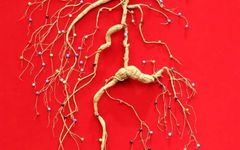Ginseng (Ren Shen) is one of the precious medicinal materials unique to China, first recorded in the Shen Nong Ben Cao Jing (Shen Nong’s Classic of Materia Medica), classified as a superior herb. It has a sweet and slightly bitter taste, is mildly warm in nature, and enters the Spleen (Pi), Lung (Fei), Heart (Xin), and Kidney (Shen) meridians. Ginseng is known for its ability to greatly replenish vital energy (Yuan Qi), stabilize the pulse, tonify the Spleen and Lung, generate fluids, nourish the blood, calm the spirit, and enhance intelligence, earning it the title of “the essential herb for boosting Qi.” Modern medicine has also confirmed that ginseng not only strengthens the body but also has therapeutic effects in preventing tumors, anti-aging, managing arrhythmias, inhibiting cell apoptosis, lowering blood sugar and lipids, and improving learning and memory. Therefore, ginseng has gained increasing popularity in recent years.Classification of Chinese Ginseng:1. Wild Mountain Ginseng (Ye Shan Shen) – Wild GinsengDefinition: Naturally propagated and grown in deep mountain forests, this is the original ecological ginseng.Growth Method: Seeds fall naturally or are ingested by birds and animals, then excreted, sprouting and growing naturally in the forest.Growth Duration: Ranges from several decades to over a hundred years.Distribution Area: Originally found in the primeval forests of Changbai Mountain and the Greater and Lesser Xing’an Mountains.Medicinal Value: The highest among ginseng types.Survival Rate: Endangered, difficult to quantify.Wild Mountain Ginseng – Forest Seed (Lin Xia Zi)Definition: Ginseng that has naturally grown in deep mountain forests for over 15 years after being seeded.Growth Method: Artificially sowing wild mountain ginseng seeds in the forest.Growth Duration:15 years or more.Distribution Area: In the primeval forests of Changbai Mountain and the Greater and Lesser Xing’an Mountains.Nutritional Value: Closest to wild ginseng, survival rate:5%.
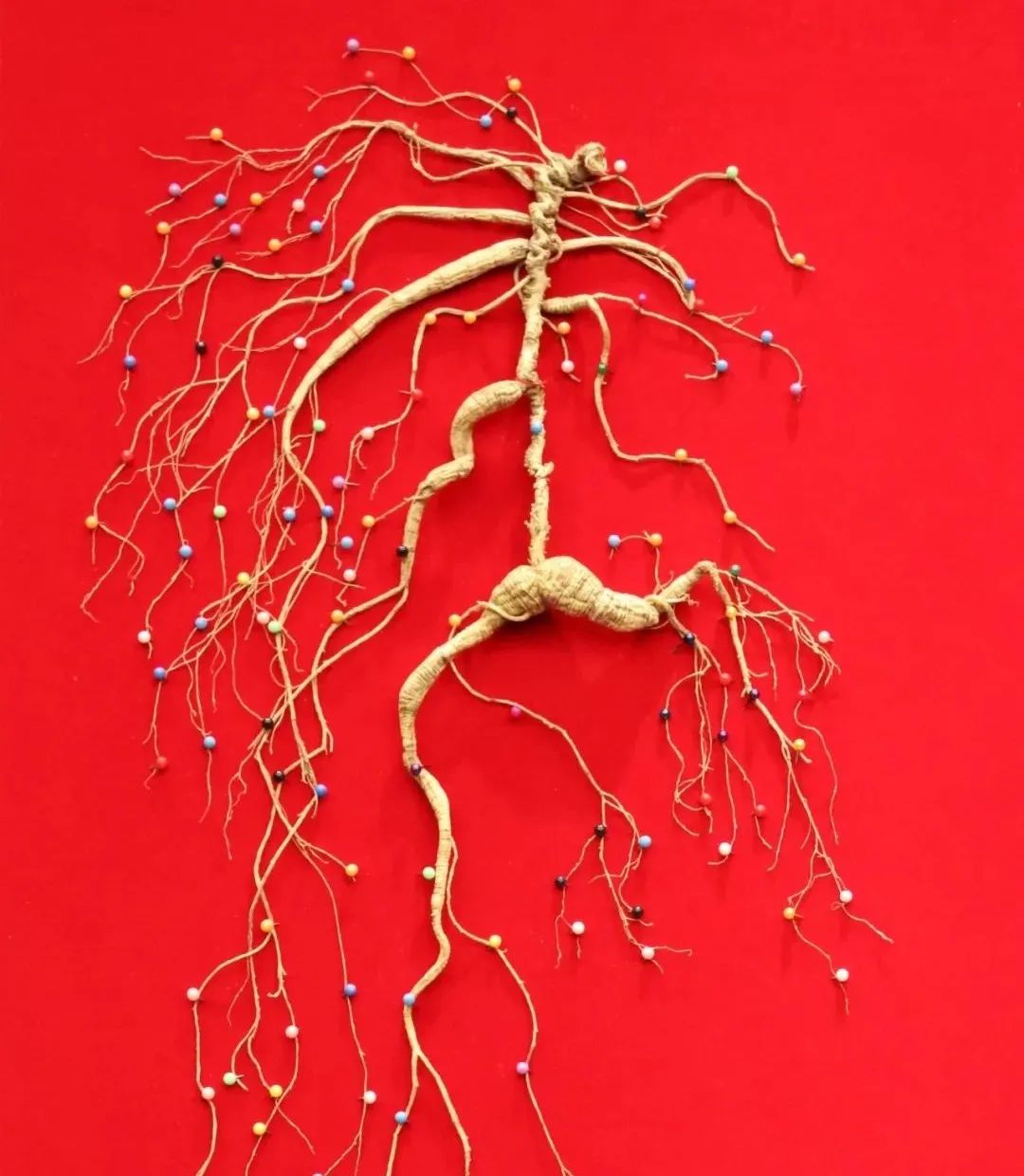
2. Pseudo-Mountain Ginseng (Lei Shan Shen) – Forest Sowing (Xiao Zai Zi Xia Shan)
This refers to wild ginseng seedlings discovered by farmers when they release them into the mountains. Due to their small weight and age, they are not suitable for direct harvesting as medicinal materials, so they are concentrated and transplanted to nearby forest areas for easier management, allowing them to grow naturally. This practice is known in the industry as “forest sowing.” If the direction of planting is not well managed, the ginseng root may rotate 180 degrees. This is not the case with forest seeds, although there are coincidences where the root does not rotate.
Pseudo-Mountain Ginseng – Seed Planted (Zi Pa), Old Seedling Transplanted to the Mountains
Seed Planted refers to transplanting forest seeds into a nursery bed; Old Seedling Transplanted to the Mountains refers to moving cultivated ginseng that has been grown for 5-6 years into deep mountain forests.
Pseudo-Mountain Ginseng – Bottom Pond Ginseng (Chi Di Shen)
Bottom Pond Ginseng refers to ginseng that remains after harvesting in old ginseng fields or gardens, also known as “abandoned sticks.” After growing naturally for several years without care, it exhibits some characteristics of wild mountain ginseng, thus significantly increasing its effective components and nutrients. It has a long root, slight water rust, scars, a spongy texture, and spiral rings.
3. Garden Ginseng (Yuan Shen)
Garden ginseng is artificially cultivated in gardens, and what is commonly referred to as “ginseng” by the public is mostly this type. It takes about five to six years from planting to harvest, yielding a larger quantity, but its medicinal value is not as high as that of wild ginseng.33Preparation:3 years for transplanting, then grow for another3 years.
Due to different processing methods, garden ginseng can be processed into various forms such as raw sun-dried ginseng, red ginseng, and sugar ginseng.
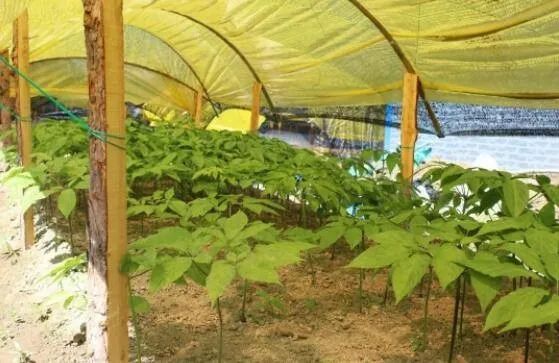
Raw Sun-Dried Ginseng: Made from fresh ginseng that is washed and dried or dehydrated. Raw sun-dried ginseng has a neutral medicinal property, primarily tonifying Qi, and is especially suitable for those with Qi and Yin deficiency. Individuals with weak constitutions, Qi deficiency hypertension, diabetes, cancer, hepatitis, nephritis, and other chronic diseases should choose raw sun-dried ginseng.
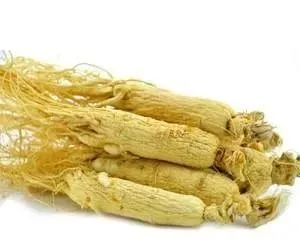
Red Ginseng: Made from fresh ginseng that is washed, steamed, and dried. Red ginseng has a warming property and is effective in tonifying Qi and warming Yang, suitable for patients with Yang deficiency. Those with symptoms of cold due to Yang deficiency, fear of cold in winter, cold extremities, premature aging in the elderly, and women with endocrine disorders should choose red ginseng.
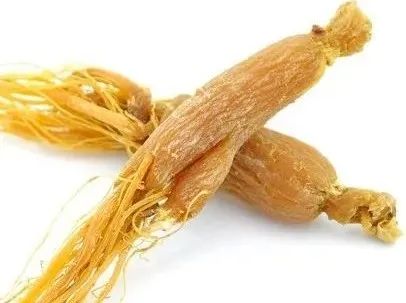 Sugar Ginseng: Made from fresh ginseng through processes of needle pricking (using bamboo needles to pierce holes around the ginseng), sugar soaking, and drying. Sugar ginseng has similar effects to raw sun-dried ginseng but is milder.White Ginseng: Made by soaking in light sugar.Active Ginseng: Also known as freeze-dried ginseng. It is made from fresh ginseng, with the skin scraped off, and processed using vacuum low-temperature freeze-drying technology (-25°C).Methods of Consuming Ginseng(1) Stewing: 3-9 grams, slice the ginseng into 2 cm thin pieces, place in a porcelain bowl, fill with water, seal the bowl, and steam for 4-5 hours before consumption.(2) Chewing: Chew 2-3 slices of ginseng in the mouth, which generates saliva and refreshes the mind; this is the simplest method of consumption.(3) Powdering: Grind the ginseng into fine powder and swallow daily, with the dosage depending on individual constitution, generally 1-1.5 grams per dose.(4) Brewing Tea: Slice the ginseng thinly, place in a bowl or cup, and brew with boiling water, covering for 5 minutes before consumption.(5) Soaking in Alcohol: Place whole ginseng or sliced ginseng in a bottle and soak in 50-60 degree white liquor, consuming as needed.(6) Cooking with Food: Ginseng often has a slight bitterness; cooking it with lean meat, chicken, or fish can eliminate the bitterness and enhance its nourishing effects.Storage Methods for GinsengGinseng contains a high amount of sugars, mucilage, and volatile oils, making it prone to moisture, oiliness, mold, discoloration, and insect damage. There are several storage methods for ginseng:1. Conventional Storage: For ginseng that is thoroughly dried, it can be sealed in a plastic bag to isolate from air and stored in a cool place.2. Moisture Absorption Storage: Place an appropriate amount of desiccant, such as quicklime or charcoal, at the bottom of a sealable jar, tube, or box, then wrap the ginseng in paper and place it inside, sealing it tightly.3. Low-Temperature Storage: This is the most ideal method. Ginseng should be dried before storage, with the best sun exposure time being from 9 AM to 4 PM. However, ginseng should not be exposed to the sun for too long, and medicinal ginseng should reach a certain level of dryness. Generally, it only needs to be turned over in the afternoon for 1-2 hours. After cooling, wrap the ginseng tightly in a plastic bag and store it in the freezer for long-term preservation.PrecautionsWhen consuming ginseng, do not simultaneously consume radishes or tea, as they may reduce its medicinal effects. It is not advisable to take ginseng indiscriminately if there are no symptoms of Qi deficiency. Individuals with strong constitutions and no signs of weakness do not need to take tonics, as misuse or excessive use may lead to adverse effects such as chest tightness and abdominal distension. Those with Yin deficiency and Yang excess or severe heat should avoid using ginseng, and special populations should take it under the guidance of a physician.
Sugar Ginseng: Made from fresh ginseng through processes of needle pricking (using bamboo needles to pierce holes around the ginseng), sugar soaking, and drying. Sugar ginseng has similar effects to raw sun-dried ginseng but is milder.White Ginseng: Made by soaking in light sugar.Active Ginseng: Also known as freeze-dried ginseng. It is made from fresh ginseng, with the skin scraped off, and processed using vacuum low-temperature freeze-drying technology (-25°C).Methods of Consuming Ginseng(1) Stewing: 3-9 grams, slice the ginseng into 2 cm thin pieces, place in a porcelain bowl, fill with water, seal the bowl, and steam for 4-5 hours before consumption.(2) Chewing: Chew 2-3 slices of ginseng in the mouth, which generates saliva and refreshes the mind; this is the simplest method of consumption.(3) Powdering: Grind the ginseng into fine powder and swallow daily, with the dosage depending on individual constitution, generally 1-1.5 grams per dose.(4) Brewing Tea: Slice the ginseng thinly, place in a bowl or cup, and brew with boiling water, covering for 5 minutes before consumption.(5) Soaking in Alcohol: Place whole ginseng or sliced ginseng in a bottle and soak in 50-60 degree white liquor, consuming as needed.(6) Cooking with Food: Ginseng often has a slight bitterness; cooking it with lean meat, chicken, or fish can eliminate the bitterness and enhance its nourishing effects.Storage Methods for GinsengGinseng contains a high amount of sugars, mucilage, and volatile oils, making it prone to moisture, oiliness, mold, discoloration, and insect damage. There are several storage methods for ginseng:1. Conventional Storage: For ginseng that is thoroughly dried, it can be sealed in a plastic bag to isolate from air and stored in a cool place.2. Moisture Absorption Storage: Place an appropriate amount of desiccant, such as quicklime or charcoal, at the bottom of a sealable jar, tube, or box, then wrap the ginseng in paper and place it inside, sealing it tightly.3. Low-Temperature Storage: This is the most ideal method. Ginseng should be dried before storage, with the best sun exposure time being from 9 AM to 4 PM. However, ginseng should not be exposed to the sun for too long, and medicinal ginseng should reach a certain level of dryness. Generally, it only needs to be turned over in the afternoon for 1-2 hours. After cooling, wrap the ginseng tightly in a plastic bag and store it in the freezer for long-term preservation.PrecautionsWhen consuming ginseng, do not simultaneously consume radishes or tea, as they may reduce its medicinal effects. It is not advisable to take ginseng indiscriminately if there are no symptoms of Qi deficiency. Individuals with strong constitutions and no signs of weakness do not need to take tonics, as misuse or excessive use may lead to adverse effects such as chest tightness and abdominal distension. Those with Yin deficiency and Yang excess or severe heat should avoid using ginseng, and special populations should take it under the guidance of a physician.


